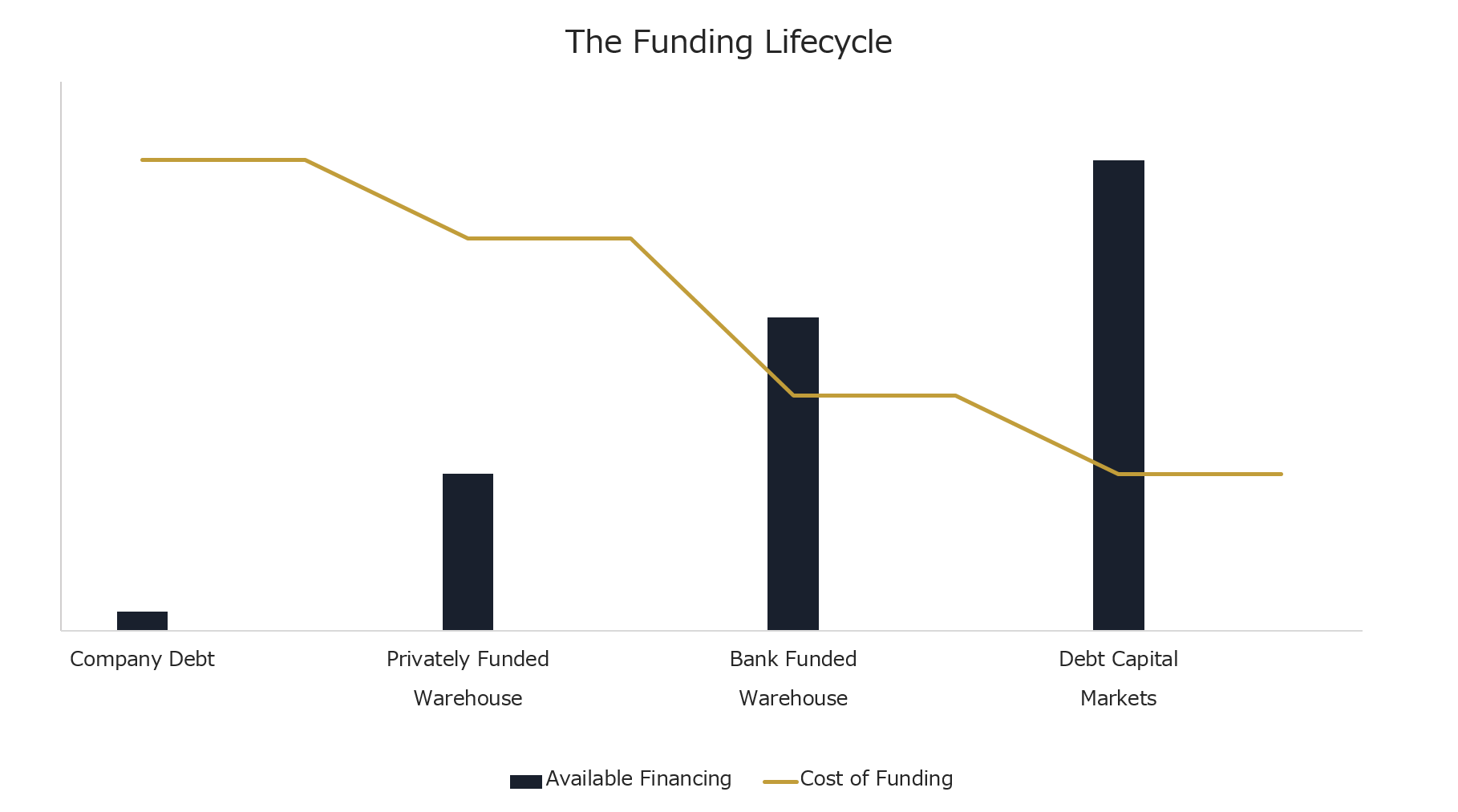Funding non-bank lenders

Alexander Funds Management
The lending landscape in Australia has changed significantly over the past two decades. Twenty years ago, banks in Australia controlled over 80% of both business and consumer lending. At the start of this century, if you were an individual or a business and wanted access to a mortgage or a loan, your only option was to talk to a bank. While the banks in Australia still dominate a large part of the market, non-bank lenders (NBL) have made significant inroads into the Australian lending market.
The success of the NBL sector has occurred for a number of reasons. Some NBLs are targeting parts of the market that banks are less willing to lend into (often for capital reasons), while others have a more streamlined offering than banks, providing a quicker and more customised solution for their clients.
The success of many of these NBLs has overwhelmingly been due to enhanced technology (“fintech”) that can drive a mix of cheaper customer acquisition, more efficient credit decision making and greatly reduced processing times. Banks are notoriously slow at upgrading their systems and technology and being able to react to changes in the market, leaving an opportunity for more nimble financers to fill the gap.
One area that banks do have a significant advantage over NBLs is through access to a cheaper and more diversified funding base. Deposits comprise a significant portion of Australian major bank funding, and at current interest rate levels for savings accounts, this provides a major cost benefit versus NBLs without a banking licence. They also have access to the debt capital markets through issuance of senior, subordinated or tier-1 debt, as well as access to securitisation funding. Furthermore, in times of stress, they have access to facilities like the Term Funding Facility (TFF), allowing them to access cheap funding directly from the RBA.
While NBLs without a banking license don’t have access to the same range of funding options as a bank, they are able to access a range of different debt funding sources depending on their size and level of sophistication.
An NBL funding profile follows a defined path that progresses as the business grows. Each step in the process results in a lower cost of debt, which given the key cost to a lending business is its cost of funding, results in a step-change in profitability.
#1 Senior funding
After initially raising equity to fund development of its operational platform and some initial loans, the first round of debt funding for an NBL is typically senior funding that sits on the company balance sheet. This debt has a claim over the entire asset base of the NBL (including the loan pool) and, given it is usually provided at the embryonic stage of the NBL lifecycle, comes at a higher cost compared to subsequent stages, with the exact rate varying depending on the type of lending and size of the business.

#2 ESTABLISH WAREHOUSE STRUCTURE
The typical second step is the establishment of an off balance sheet funding vehicle (“warehouse”) initially funded by specialist credit investors. A warehouse is a funding structure that provides a lender with off balance sheet financing to fund new loans, allowing the NBL to effectively sell loans it has originated into the warehouse. The NBL still services the loans and maintains the relationship with the end customer, but the loans become the assets of the warehouse. The benefit of borrowing through a warehouse rather than at the corporate level is that the warehouse is bankruptcy remote from the corporate entity, presenting a lower level of risk to the credit investor financing the NBL, in turn resulting in a lower cost of financing.
However, not all NBLs are in the position to get financing through a warehouse structure. There are substantial initial set up costs and additional ongoing operational costs such as trustee fees, back-up servicer fees and audit fees. While the ultimate goal for an NBL in establishing a warehouse is to have a bank providing the majority of financing, often in the initial stages that role is filled by private capital from specialist investors. This gives the NBL time to continue building the size of its loan portfolio and loss history, both of which are important to ultimately securing bank funding. The interest rate in this stage of the NBL funding life cycle is lower than corporate debt but can range in the high single digits to low double digits depending on the type and quality of lending undertaken by the NBL.
#3 Bank funding
The third step for an NBL in its financing journey is the introduction of bank funding into the warehouse. The time taken for an NBL to reach a position where a bank would be comfortable in providing them with senior financing into a warehouse can vary, however reaching this step represents a material decrease in the cost of funding as bank financing will come at a much lower rate than senior financing from private sources.
It’s important to note that even with a bank as a senior funder, there is a limit on the amount it can lend. In order for the NBL to achieve its most efficient capital structure, they will require a mezzanine lender (typically private capital) to sit underneath the senior lender.
Mezzanine financers take on greater risk than the bank as they hold a more junior position within the structure. While a small proportion relative to the senior notes, warehouses can be in the hundreds of millions of dollars, meaning the mezzanine note itself can be large. Additionally, warehouses are structurally complex vehicles that require specific expertise in order to successfully invest. The combination of these factors limits the number of mezzanine warehouse providers available within the Australian market. Having a private debt financier fund an entire warehouse structure initially allows that financier to better understand the risks within the underlying product. This enables them to more comfortably move to a mezzanine position within that warehouse once a bank takes on the senior position within that structure. Ideally, an NBL will end up with multiple warehouses funded by different banks and mezzanine funders.
#4 Captial debt markets
There is a fourth step available for an NBL that becomes large enough; access to securitisation debt capital markets. This will further lower financing costs versus the warehouse and provides the NBL with better diversity of funding options.
All NBL’s will require financing from the private sector to support their growth aspirations. Ideally, they’ll have a financing partner that understands the different steps in the journey. Having a partner that has the capability to be involved at every step will make the transition more efficient and the NBL will be better prepared to continue evolving their funding journey.
Conclusion
The cost and reliability of financing are vital
to the profitability of an NBL and follows a well-trodden path. Each step on
that path represents a step change in the cost of funds and the quicker an NBL
can move through each stage, the more rapid the growth in their earnings.
Choosing the right partner in that process is crucial as a financing provider
who can move between all four stages is in a better position to help the NBL reach
its ultimate funding cost goals.
Never miss an insight
Enjoy this wire? Hit the ‘like’ button to let us know. Stay up to date with my content by hitting the ‘follow’ button below and you’ll be notified every time I post a wire. Not already a Livewire member? Sign up today to get free access to investment ideas and strategies from Australia’s leading investors.
5 topics

Chris is the Managing Director and Senior Portfolio Manager at Alexander Funds Management. He has over 30 years’ experience in the global credit markets, and established AFM in 2009 to provide fixed income opportunities to Australian investors.
Expertise

Chris is the Managing Director and Senior Portfolio Manager at Alexander Funds Management. He has over 30 years’ experience in the global credit markets, and established AFM in 2009 to provide fixed income opportunities to Australian investors.
